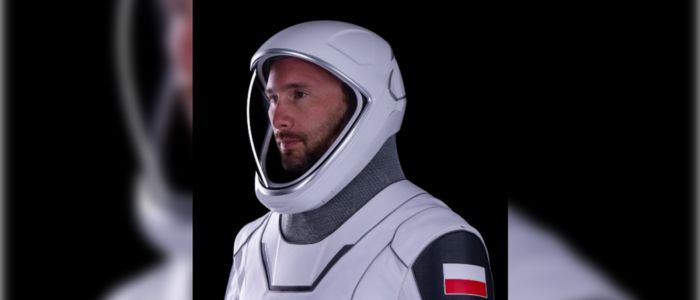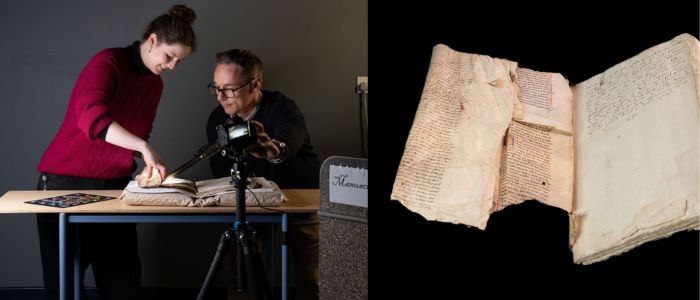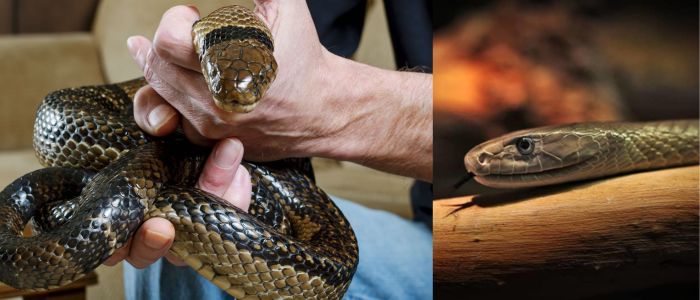At Sutton Hoo in England, where the seventh-century Anglo-Saxon “ghost ship” burial is located, archaeologists have published a substantial amount of information on a mysterious sixth-century object, the Bromeswell bucket. First identified as fragments in 1986 and excavated more completely in 2012, the bucket has puzzled scientists with its high-resolution North African hunting scene that includes warriors, animals, and weapons. Experts believe it was created in Antioch (in what is now Turkey) under the Byzantine Empire and was moved to Britain a century later.
The bucket’s missing base, which had not been seen for decades, was discovered during a summer dig. This recently discovered section of the hull also showed decoration, including paws, shields, and the already absent face of one warrior, rounding out the design of the vessel. The contents were also surprising — cremated human and animal bone along with a remarkably well-preserved comb — and suggest it was the bucket in which a high-status individual was cremated.
Revealing the Burial Secrets
The pail was carefully excavated and then subjected to CT scans and x-rays before a team of experts could give the find a closer look. Inside it, they found cremated human bones, including skull vault and ankle bones, as well as animal remains that may also pertain to a horse, an animal commonly associated with high-status Anglo-Saxon cremation rituals. The bones and fibers appear to have been in a collapsed bag and were then put into the bucket. Some of these fragments were also swirled with copper alloy from the patina of the vessel.
The most distinctive part of the burial is that no other bucket from the period has been discovered with cremated remains. Inside the bucket, the researchers also found a well-preserved comb, which appears to have been made from antler. It was not burnt like the bones. Combs such as these were used by men and women to groom hair, as well as to extract lice. Researchers hoped that DNA from the comb might provide clues about the identity or possible origin of the person buried there because the sex of the individual could not be determined by examination of the bones alone.
Knowing the Bucket’s Journey and Importance
The base of the bucket was found intact with concentric cold hammering rings imprinted on it, a technique of shaping metal by pounding that doesn’t involve heat. No lid has been discovered but the bucket appears to have been old when buried. It may have been a valuable antique, a diplomatic gift, or an accouterment of a widely traveled Saxon soldier. It is used as a mortuary pot for cremation, which suggests the person is the high status and may be involved in foreign affairs, researchers said.
The find is one of many made during a two-year project that began in 2024 and includes multiple archaeological teams. It is part of a long tradition of Sutton Hoo’s shaping our understanding of Anglo-Saxon England. One of these, in the late 1930s, famously disclosed a 90-foot-long ship burial that is thought to have been the grave of King Raedwald of East Anglia, who died around 624. The vessel 0.8 km was towed up the River Deben and buried under a mound with its treasures.
As well as the royal burial, a sixth-century Anglo-Saxon cemetery with 13 cremations and 9 inhumations was found next to the Sutton Hoo visitor center in 2000. The fact that they were ancestors may be why they're called princes (most were men), to distinguish them from the people later buried in the royal mounds and thus give a comprehensive view of early Anglo-Saxon life and customs. The new discoveries shed further light on burial practices and cultural interaction in the era.
PREV NEWS
NEXT NEWS


China is on the forefront of sodium-ion battery deployment, and electric scooters is being used as the flagship product. Scooters like these, enabled by sodium batteries rather than the conventional lithium-ion and lead-acid models, are becoming popular, helping to usher the technology into the mainstream.

A Polish astronaut has captured the attention of space enthusiasts after revealing the advanced spacesuit he will wear during his upcoming journey to space. The modern design of the suit and the significance of the mission have created a wave of excitement online.

Two previously unknown pages from a 13th-century tale of Merlin in Old French and of Arthur in Guinevere’s court were discovered by researchers at Cambridge University Library. Written in Old French, these leaves were discovered bound into another book as its cover. The fragment is from the “Suite Vulgate du Merlin,” a sequel to the Arthurian legend. Roughly three dozen copies of this sequel are believed to exist.

A novel way to treat snakebites has been discovered through an unlikely collaboration between a scientist and a man who spent nearly 20 years self-immunizing himself by exposing his body to snake venom. Immunologist Jacob Glanville identified Tim Friede, a self-taught snake handler who had injected himself with venom from some of the deadliest snakes on the planet — culturing himself to snake venom as if it were poison ivy and even permitting snakebites at one point — all to gradually build his immune system.

Google has unveiled its most sophisticated AI video tool to date — Veo 3. The tool can produce a strikingly realistic video that is virtually indistinguishable from human-created content. Its realism is both thrilling and troubling to the many who think that fact and fiction are increasingly blurred online.

BY Oskar Malec

BY Oskar Malec

BY Oskar Malec

BY Oskar Malec

BY Oskar Malec
Uwielbiamy pliki cookie — zarówno te jadalne, jak i cyfrowe, które ulepszają Twoje wrażenia z przeglądania. Pomagają nam one udoskonalać funkcjonalność naszej witryny i Twoje ogólne wrażenia. Podstawowe i funkcjonalne pliki cookie są niezbędne do prawidłowego działania witryny i nie można ich wyłączyć. Ponadto używamy plików cookie w celu optymalizacji wydajności („komfort”) i wyświetlania spersonalizowanych reklam („marketing”), na co potrzebujemy Twojej zgody. Kliknij „Zezwól na wszystkie”, aby wyrazić zgodę na przetwarzanie danych. Uwielbiamy pliki cookie — zarówno te jadalne, jak i cyfrowe, które ulepszają Twoje wrażenia z przeglądania. Pomagają nam one udoskonalać funkcjonalność naszej witryny i Twoje ogólne wrażenia z przeglądania. Podstawowe i funkcjonalne pliki cookie są niezbędne do prawidłowego działania witryny i nie można ich wyłączyć. Ponadto używamy plików cookie w celu optymalizacji wydajności („komfort”) i wyświetlania spersonalizowanych reklam („marketing”), na co potrzebujemy Twojej zgody. Kliknij „Zezwól na wszystkie”, aby wyrazić zgodę na przetwarzanie danych.
Twoja zgoda obowiązuje również na mocy art. 49 (1) (a) RODO, co oznacza, że Twoje dane mogą być tymczasowo przetwarzane poza EOG, w tym w USA. W takich przypadkach wysokie europejskie standardy ochrony danych mogą nie być w pełni zagwarantowane, a władze USA mogą uzyskać dostęp do Twoich danych bez skutecznego środka prawnego. Możesz wycofać swoją zgodę w dowolnym momencie.
PrywatnośćWarunki korzystania z serwisu
Możesz zarządzać swoimi preferencjami dotyczącymi plików cookie lub wycofać zgodę w dowolnym momencie za pośrednictwem naszych ustawień plików cookie. Aby uzyskać więcej informacji, zapoznaj się z naszą Polityką prywatności.